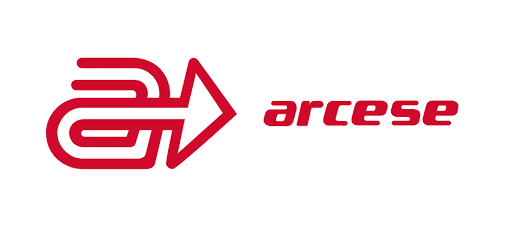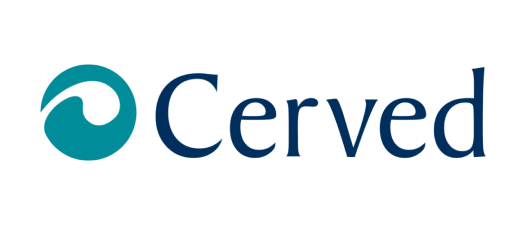"Our internal platform is totally based on Kafka communication between all the pillars, so it’s like a nervous system for us."
Massimiliano Catapano
Chief Technology Officer, Arcese
Arcese Group is an Italian logistics company operating road, freight, air, and sea services all over the world. Customized supply chain solutions are managed from a network of offices around the globe, but really, the most important location is the cloud.
Data visibility is a valuable commodity to customers because they need to plan their inbound and outbound logistics around Arcese’s logistics services. Particularly for customers with justin-time (JIT) processes, such as automotive companies, where five minutes of latency pushes the limits of what is acceptable. It’s not uncommon for incredibly steep penalties to be written into contracts—to the tune of thousands of euros per minute. This issue of precise timing is a technology complication that can ultimately determine survival in the logistics world.
In a highly competitive market with tiny margins and a lot of room for error, Arcese sought a way to differentiate themselves.
Massimiliano Catapano, Chief Technology Officer, has taken the lead in making sure the company is on the vanguard of transportation technology, offering customers services they can’t get elsewhere—as well as opening up potential lines of revenue based on the deep insight they could gain with data.
How to differentiate from competitors by putting data in motion across the supply chain
In this industry, every major logistics company has a custom-built transportation management system (TMS) and every customer expects “track and trace” capability. But with Arcese’s legacy infrastructure, there was an unacceptable lag in posting track-and-trace data, taking up to 1 hour to get data through the pipeline, largely because of a myriad of complications in the supply chain process. “We are sort of a data model normalizer because every customer sends information in different ways. The problem,” explains Catapano, “lies in taking these orders and giving back track-and-trace and milestone events.”
In order to address these technical challenges, the simple solution was to build out a better TMS for Arcese.
Arcese manages all of its IT in the cloud, with no physical hardware and zero location-based server constraints. This is an important element of the company’s data ethos, which places a high priority on the facility of data across the organization and, critically, to customers.
Wih a multicloud solution, namely Microsoft Azure and Google Cloud Platform (GCP), one of the main challenges Catapano faced was to find a solution that would work well in any major cloud, addressing the issue of latency without creating additional maintenance and operational burden for the team.
Another consideration for Catapano was forecasting, which would give Arcese that competitive edge. Forecasting requires the ability to tap into both historical and real-time data, with streaming data that’s instantly accessible. For example, looking at patterns around seasonality requires historical data from many years back and then bridging that data to current real-time demand is crucial to the supply chain.
That’s what brought Arcese to Apache Kafka®, which enables them to access, stream, and analyze various sources of data in real time for internal operations and for their customers.
A TMS built on Kafka that taps into data around the world—and opens up a world of data potential
But choosing the right Kafka partner was important. When it came to evaluating providers, finding a cloud-native partner that could operate in every major cloud was a priority, as well as finding a solution that allowed the team to focus on building new capabilities and lines of revenue without getting mired in Kafka management.
Arcese found the answer with Confluent, the data streaming platform deployed in the organization’s Azure cloud environment.
While there’s a robust development team at Arcese, the fully managed aspect of Confluent is an important feature of the solution, as far as Catapano is concerned. After all, he says, “We’re not running Kafka from 9 to 6. We have to run it 24/7, because we’re in business all over the world.”
Being a global business and self-managing Kafka would require his IT team to consist of at least seven Kafka dedicated employees, covering all the bases around the clock—an unaffordable solution. Catapano explains, “It would be a follow-the-sun strategy that requires a lot of people and a lot of money.” Instead, with Confluent, if an issue arises, the team simply opens a ticket and this affords them more time to focus on building apps and less time managing Kafka clusters.
Because Confluent is available on Azure, the team is now able to scale event processing and access 120+ pre-built connectors. Additionally, Confluent’s deep integration with Microsoft Marketplace and services enables unified security, management, and billing.
The development team at Arcese had traditionally been coding in C# but recently switched to Java, and the move to Confluent made this switch seamless. With multi-language support, the team has been able to begin to create producers and consumers in the language of their choice. “That’s been very nice,” says Catapano, “because in the data market today, there’s a lot of turnaround. It’s not so easy to find developers. This has helped us attract and keep developers.”
Data in motion making the difference at Arcese
The benefits Arcese is discovering from the switch to Confluent’s fully managed data streaming platform includes some major business and technological game-changers. Using connectors to directly connect Kafka to their Microsoft SQL Server database, the time it takes to move track-and-trace data through the pipeline has gone from 45-50 minutes to less than one. This provides customers with real-time data for tracking shipments and deliveries, and with a 5-minute maximum turnaround time expectation in the market, this is a huge competitive lever when it comes to attracting new business and customer retention.
Forecasting is now far more accurate, with the potential of predictive analytics now that historical and real-time data is accessible instantly, across and beyond the organization.
The development and IT team, now freed up from managing Kafka, is able to focus on innovation and has many more exciting data projects in the works, such as the new Arcese platform. This will enable far more accurate forecasting, financial and predictive analysis using instantly accessible historical and real-time data, across and beyond the organization. “Our internal platform is totally based on Confluent communication between all the pillars, so it acts like a central nervous system for us,” explains Catapano.
IT team members are also completing Kafka certification and participating in ksqlDB coursework in order to get up to speed with what they’ll need to know in the future, which will enable even more progress in the digital logistics arena.
Catapano is confident that Arcese will be far ahead of the competition when its TMS is finalized in 2025, as they are already seeing the benefits of their work so far. The move to Kafka will have another massive advantage, as well, when the team is able to develop custom connectors, allowing them to share their data with outside partners, potentially opening up a valuable new revenue stream.
“Customers are very impressed since we’re not an IT company; we’re a transportation company. I am proud of the things we do—especially in a high competition market with low, low margins,” says Catapano. Ultimately, this work will allow Arcese to achieve the goal of becoming a transportation company with a digital heart.
Business Results
Real-time data insights for customers
Where it once took 45-50 minutes to give customers track-and-trace data, now, it takes less than a minute to get that data through the pipeline.
Easy, efficient forecasting
Data in motion on Confluent’s platform helps the team tap into both historical and real-time data to offer better predictive analytics.
IT teams can focus on innovation
Without having to manage Kafka, the development team can put its creative energy to better use—innovating new products and services.
Technical Benefits
Flexible Kafka deployments across every cloud
While Arcese currently uses Confluent in Azure, the company also uses GCP, so it was important they invest in a truly cloud-native Kafka solution with flexible deployment options across every major cloud.
Scale data streaming with Connectors
With access to over 120+ pre-built connectors that are available on Azure, the team is able to scale event processing and directly connect Kafka to their database.
Empieza a usar Confluent hoy mismo
Las nuevas altas reciben 400 dólares para gastar en Confluent Cloud durante los primeros 30 días.



